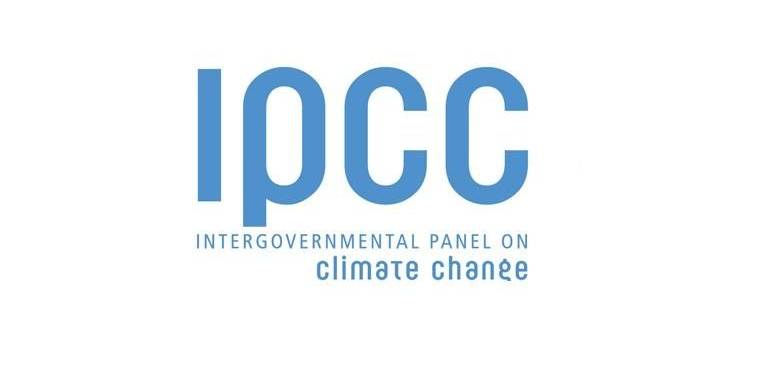
234 scientists searched more than 14,000 research articles to write the next IPCC climate report. Attention, big problems in prospect.
This week, hundreds of scientists around the world are finalizing a report that assesses the state of the world's climate. The report is used by governments and industries around the world to understand upcoming threats. So who are these scientists, and what goes into this important assessment?
Prepare for a few acronyms. We're going to explore the next IPCC report and some of the terms you'll hear when it's released on August 9, 2021. What is the IPCC? IPCC stands for Intergovernmental Panel on Climate Change. It is the United Nations organization focused on climate science. It has existed since 1988 and has 195 member countries. Every seven years or so, the IPCC publishes a report - essentially a 'state of the climate' - summarizing the most recent and peer-reviewed research on the science of climate change, its effects, and how to adapt and respond to it. mitigate it. The purpose of these reports is to provide everyone, especially governing bodies, with the information they need to make important decisions about climate change. Essentially, the IPCC provides governments with a study guide version of thousands of published articles on the science, risks, and social and economic components of climate change. There are two important things to understand: IPCC reports are non-partisan. Each IPCC country can nominate scientists to participate in the report writing process, and there is an intense and transparent review process. The IPCC does not tell governments what to do. Its aim is to provide the latest knowledge on climate change, its future risks and options to reduce the rate of warming.
How important is this report? The last major IPCC assessment was published in 2013. A lot can change in eight years. Not only have computer speed and climate modeling improved greatly, but every year scientists understand more and more about Earth's climate system and how specific regions and people around the world entire populations are changing and vulnerable to climate change.
Where does the research come from? The IPCC does not conduct its own research in climatology. Instead, it proceeds to summarize what experts around the world are producing. The upcoming report was written by 234 scientists nominated by IPCC member governments around the world. These scientists are eminent experts in Earth and climate sciences. This report - the first of four that make up the IPCC's Sixth Assessment Report - examines the physical science behind climate change and its impacts. On its own, it will contain over 14,000 excerpts from existing research. Scientists have reviewed all research related to climate science published through January 31, 2021. These scientists, who are not paid for their time and effort, have volunteered to read these more than 14,000 articles so that you don't have to. Instead, you can read their shorter reviews of scientific consensus on topics such as extreme weather or regional changes in sea level rise. The IPCC is also transparent about its review process, and that process is broad. Drafts of the report are being shared with other scientists, as well as governments, for comment. Before publication, the 234 authors will have had to send more than 75,000 comments on their work. The government's contribution to these kinds of larger reports, such as the one to be released on August 9, 2021, is limited to commenting only on draft reports. However, governments have much more to say in the shorter summary for policymakers included in these reports, as they need to come to a consensus and generally enter into detailed negotiations on the matter.
SSP - what does all this mean? One thing everyone wants to understand is what the future might look like as the climate changes. To get a glimpse of this future, scientists are experimenting with computer models that simulate Earth's climate. With these models, scientists may ask: if the globe is warming in special proportions, what could be happening in terms of sea level rise, droughts and ice caps? What if the globe heats up less than that - or more?
So what are the results? The IPCC uses a set of scenarios to try to figure out what the future might look like. This is where some of these acronyms come in. All climate models work a little differently and create different results. But if 20 different climate models are run using the same assumptions about the amount of warming and produce similar results, people can be pretty confident about the results.
RRCs, or representative concentration pathways, and SSPs, or shared socioeconomic pathways, are the standardized scenarios used by climate modelers. Four DRRs were the subject of the prospective climate modeling studies included in the 2013 report. They ranged from RCP 2.6, where there is a drastic reduction in global fossil fuel emissions and the world is only getting a little warmer. , at RCP 8.5, a world in which fossil fuel emissions are unimpeded and the world is getting hotter. This time, climate modelers are using SSPs. Unlike DRRs, which focus only on greenhouse gas emission trajectories, PHC takes into account socio-economic factors and is concerned with the difficulty of adapting to or mitigating climate change. , which in turn affect greenhouse gas emissions. The five SSPs differ in how the world might look like in terms of global demographics, equity, education, access to health, consumption, food, fossil fuel use, and geopolitics.
Why should we care? Let’s look around us. So far, 2021 has been the subject of deadly extreme weather events around the world, ranging from widespread wildfires to extreme heat, excessive precipitation and flash flooding. Such events are becoming more frequent in a warming world.
It is very hot and we are responsible for it. Us and no one else. We are sure of it. This is a very bad thing. But we can fix it. As Kimberly Nicholas, a sustainability scientist and professor at Lund University, puts it: "Don't expect an optimistic picture to emerge from the next report. Climate change is a threat multiplier. which exacerbates other global, national and regional environmental and social problems. More than 200 people died in flooding in cities and houses that had existed for centuries were washed away in Germany and Belgium in July 2021. "
It is therefore essential that we read this report and understand the main sources of greenhouse gases that cause climate change. Each of us can take steps to reduce our emissions, including driving less, using energy-efficient light bulbs and rethinking our food choices.
But the behavior of citizens alone will not be enough. Governments must make strong commitments immediately. Imagine for example that 20 fossil fuel companies are responsible for about a third of all greenhouse gas emissions! There is no more time to lose.
Posted on 2021-08-08 22:40









Comments